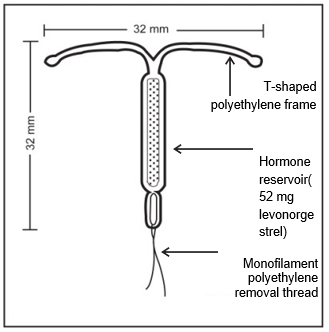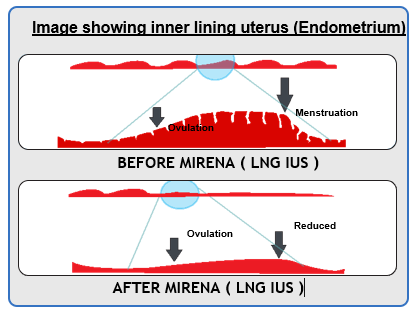Menorrhagia is the medical term for menstrual periods with abnormally heavy or prolonged bleeding.

MIRENA

MIRENA
The hormone in MIRENA reduces menstrual bleeding by controlling the monthly development of the womb lining , making it thinner , so that there is less bleeding every month.

MIRENA
MIRENA is inserted under short general anaesthesia as a day care procedure after dilatation and curettage for heavy menstrual bleeding.
MIRENA is effective for 5 years, after which it is removed as an OPD procedure.
It can be removed any time in-between if required.
It prevents pregnancy and acts as a birth control device.
As less flow is because of thinning of inner lining of uterus , there will not be any side effects.
MIRENA may decrease HMB associated with fibroids .
MIRENA alleviates adenomyosis related HMB and pain during periods.
MIRENA appears equally effective as hysterectomy in improving quality of life in patients of heavy periods, it can serve to lower the incidence of hysterectomies.